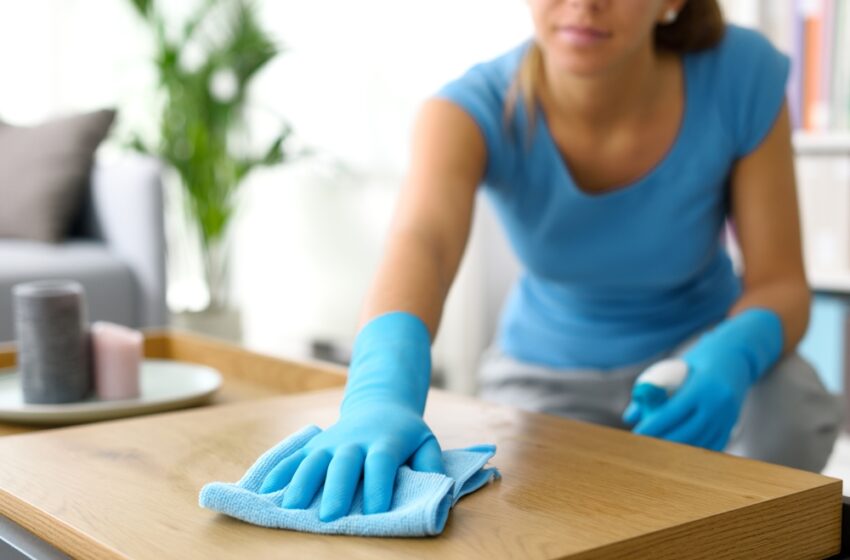Workplace Safety Guide: Service Industry

Whether your employees spend their days cleaning homes, responding to emergencies, or treating patients, their job is to serve others. You can serve them by providing a safe, healthful workplace. Here are some of the most common hazards in the service industry and controls to prevent them.
Slips, trips and falls
Hazard:
Wet, oily, muddy and icy surfaces increase the risk of slips, trips and falls. Workers might also be required to access platforms and equipment located high above the ground.
Controls:
- Keep the job site clean and orderly, with walkways clear of clutter that can create trips hazards.
- Select, set up and use ladders safely.
- Use required fall protection when working from heights.
- Do not jump from truck beds or equipment.
Workplace violence
Hazard:
Workplace violence is a pervasive problem across industries. It is especially relevant in service industries such as healthcare, firefighting and emergency medical services, where workers serve potentially violent patients. In fact, about 70% of on-the-job assaults happen in health care, according to the Occupational Safety and Health Administration (OSHA).
Control:
Promote Awareness: Violence is such a high-profile hazard in health care that OSHA issued prevention guidelines specifically for hospitals, clinics and home health care settings. The rest of us can follow general preventive measures like taking note of customers who linger without buying, leave and come back or go to a part of the store where it is difficult to see them. If someone looks suspicious, make friendly eye contact with them. Most importantly, don’t be a hero, and don’t chase the robber. Your life is more important than merchandise or money.
Strains
Hazard:
Like workplace violence, strains are common in all sectors of the service industry, but they are a high-profile issue in the health care industry. Nursing aides, orderlies and attendants record the highest rates of back strains. Employees are at risk when they lift, transfer and reposition patients, especially from awkward positions.
Control:
Practice Safe Lifting Techniques: Health care workers and emergency responders are at high risk of back strains when lifting patients. Employers should implement a comprehensive safe patient handling program. Everyone else can practice safe lifting techniques such as bending at the knees instead of the waist, keeping the load close to our body, and pivoting instead of twisting.
Hazardous chemicals
Hazard:
People who work in nail salons, shoe repair shops, house remodeling, or home and pool cleaning businesses use products that include potent chemicals. Even everyday cleaning products can be harmful if not handled properly.
Control:
Comply With OSHA’s Hazard Communication Standard: By June 1, 2016, employers who use hazardous chemicals in their workplace must be in compliance with OSHA’s revised hazard communication standard. The standard helps ensure employees understand the risks associated with chemicals and know how to protect themselves.
Bloodborne pathogens
Hazard:
Bloodborne pathogens are infectious microorganisms in blood that can cause hepatitis, HIV and other life-threatening diseases. Service industry employees are at risk when they give shots to patients, handle contaminated clothing or personal protective equipment, and clean contaminated surfaces.
Control:
Use Universal Precautions: Controlling bloodborne pathogen exposure starts with practicing universal precautions, which means treating all blood and potentially infectious materials as if they were infected. From there, use self-sheathing needles, sharps disposal containers, vaccinations and other preventive measures to control the risk of coming in contact with infected blood (PDF).
Motor vehicle accidents
Hazard:
Motor vehicle accidents are the leading cause of workplace fatalities across industries. Emergency responders, bus drivers, taxi drivers and tow truck operators are just a few examples of service industry workers who log a lot of time behind the wheel, often driving at high speeds and maneuvering through congested streets.
Control:
Remember the Basics: You can reduce your risk of being involved in a motor vehicle accident if you practice these basic principles:
- Buckle up every time, and make sure passengers do the same.
- Put cell phones and other distractions away.
- Never drive while drowsy.
- Control your speed, especially when driving on slippery roads, hauling heavy loads and negotiating curves in top-heavy industrial trucks.
- Keep your cool, even when other drivers get aggressive.
Sponsored by:

Caring for Texas for more than 25 years
As the leader of the workers’ compensation market, Texas Mutual is committed to building a stronger, safer Texas. We offer workers’ compensation insurance that protects employers, their businesses, and their employees from the consequences of an on-the job injury or illness. Don’t “go bare”—protect your employees and business with the company who does workers’ compensation bigger and better than anyone else. Whether you work in oil and gas, restaurants, construction, healthcare, auto repair, or any other industry, we’re here to help.





